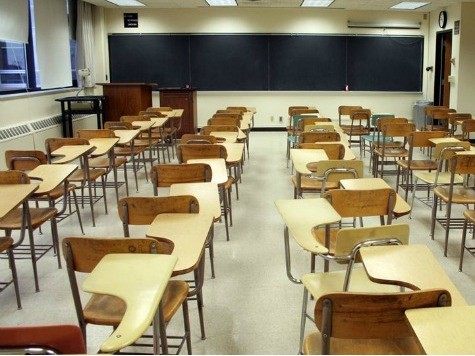A high school physics teacher is encouraging other teachers to use a unit he has prepared for his students about institutional racism, privilege, and social justice.
John Burk, a physics and math teacher in Delaware, wrote at his blog that he met physics teacher Moses Rifkin of University Prep in Seattle at a People of Color Conference.
I developed a curriculum to introduce institutionalized racism, privilege, and social justice. Blogged about it here: http://t.co/sRRwqz6ucS
— Moses (@RiPhysKin) February 13, 2015
“I learned about the incredible unit he teaches his senior physics students that brilliantly brings lessons about social justice, privilege, and institutional racism into the physics classroom and leads to a measurable change in student understanding and attitudes about this subjects [sic],” wrote Burk on Thursday.
As reported at Missouri Education Watchdog, in a series of guest posts for Burk’s blog “Quantum Progress,” Rifkin writes that he felt “jealous of my colleagues in English and History who got to talk every day in class about society and how it worked and how to be moral and caring and kind.”
Rifkin explains he is “stuck” because he is teaching at a private school, where his “students weren’t learning about their own privilege (academic and, in many cases, economic and racial).”
The physics teacher, however, says he has “found a way to introduce my students to the ideas of racial and gender privilege, to the idea that our society is far from a meritocracy, and to broaden their conception of who (racially, gender-wise, etc.) does science to include a much broader slice of society.”
“As science teachers, we have to take an active role in undoing the bias in our society,” Rifkin encourages. “Don’t be afraid to try, and don’t wait until you know exactly what to do.”
Rifkin’s six-day curriculum focuses on the central question of why there are few black physicists. Prior to the start of the class project, Rifkin assigns “pre-project homework,” which amounts to, he asserts, an “anonymous pre-evaluation so that I can get a sense of the class’ beliefs.”
Statements on the “pre-evaluation” – to which students are asked to respond either “Believe” or “Do Not Believe” – include:
- Offering scholarships for racial minorities is an example of racism.
- American society fits my definition of racist.
- When racial minorities say racism is present and I don’t see it, they’re likely playing the race card.
- People who are born white tend to have an [sic] set of advantages over those born black.
- I have consistently benefited from unearned privilege in my life.
Rifkin says that after looking at basic statistics – 4.2 percent of physicists self-identified as black as of 2012, according to the National Science Foundation’s “Minorities and Persons with Disabilities in Science and Engineering” report – he can get to his “not-so-secret agenda,” which includes the message that blacks may not believe the field of physics is open to them, and that white private school students of economic means (such as Rifkin’s students) have privileges black students do not have.
Rifkin further explains that while he begins with black physicists, he has subsequently “done a better and better job of encouraging students interested in other scientific minorities (women, other races and ethnicities, the economically disadvantaged, the physically disabled, the LGBTQ community, etc.).”
In his second blog post, Rifkin explains that once his physics students discuss their findings, his goal is to “help them see that the myth of meritocracy leads us to attribute characteristics to groups (‘maybe black students are less motivated to do well’). … We end up ascribing qualities to groups for reasons that are beyond their control.”
Rifkin also assigns his students the task of reading an article about James Sherley, a black stem cell researcher who was denied tenure by M.I.T., supposedly due to racism. Once again, he states his “not-so-secret agenda” is “redefining racism to include systems of power and privilege, not just individual acts”; getting across the concept that “the playing field is not level, and inequality can lead to more inequality”; and articulating the notion that “one benefit of being white is not having to think about the privilege of being white.”
Another reading Rifkin assigns in his physics class is Peggy McIntosh’s “White Privilege: Unpacking the Invisible Knapsack.” He also recommends that his students listen to the song “White Privilege” by “Seattle’s second-most famous rapper, Macklemore,” for further scientific study.

COMMENTS
Please let us know if you're having issues with commenting.